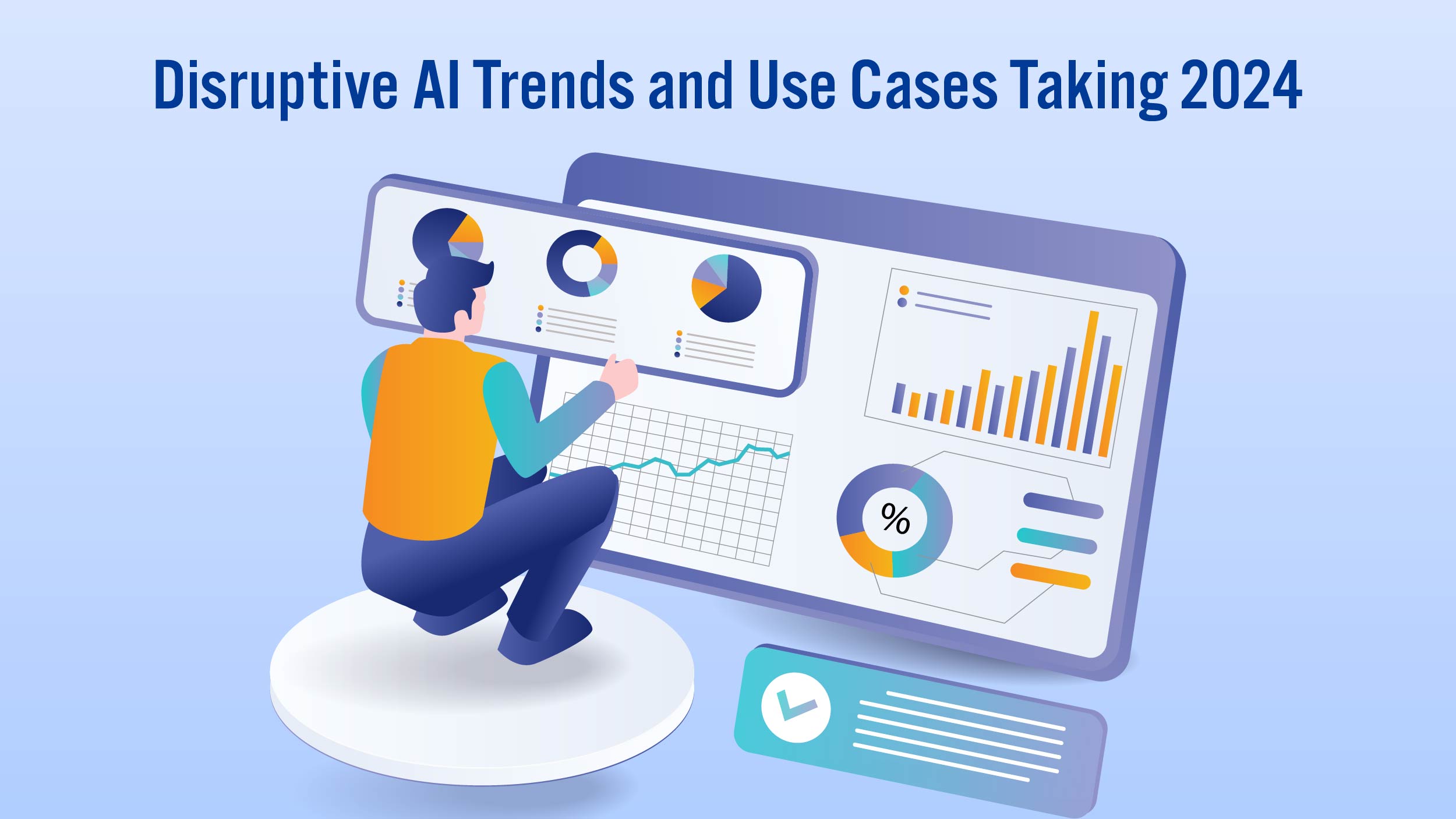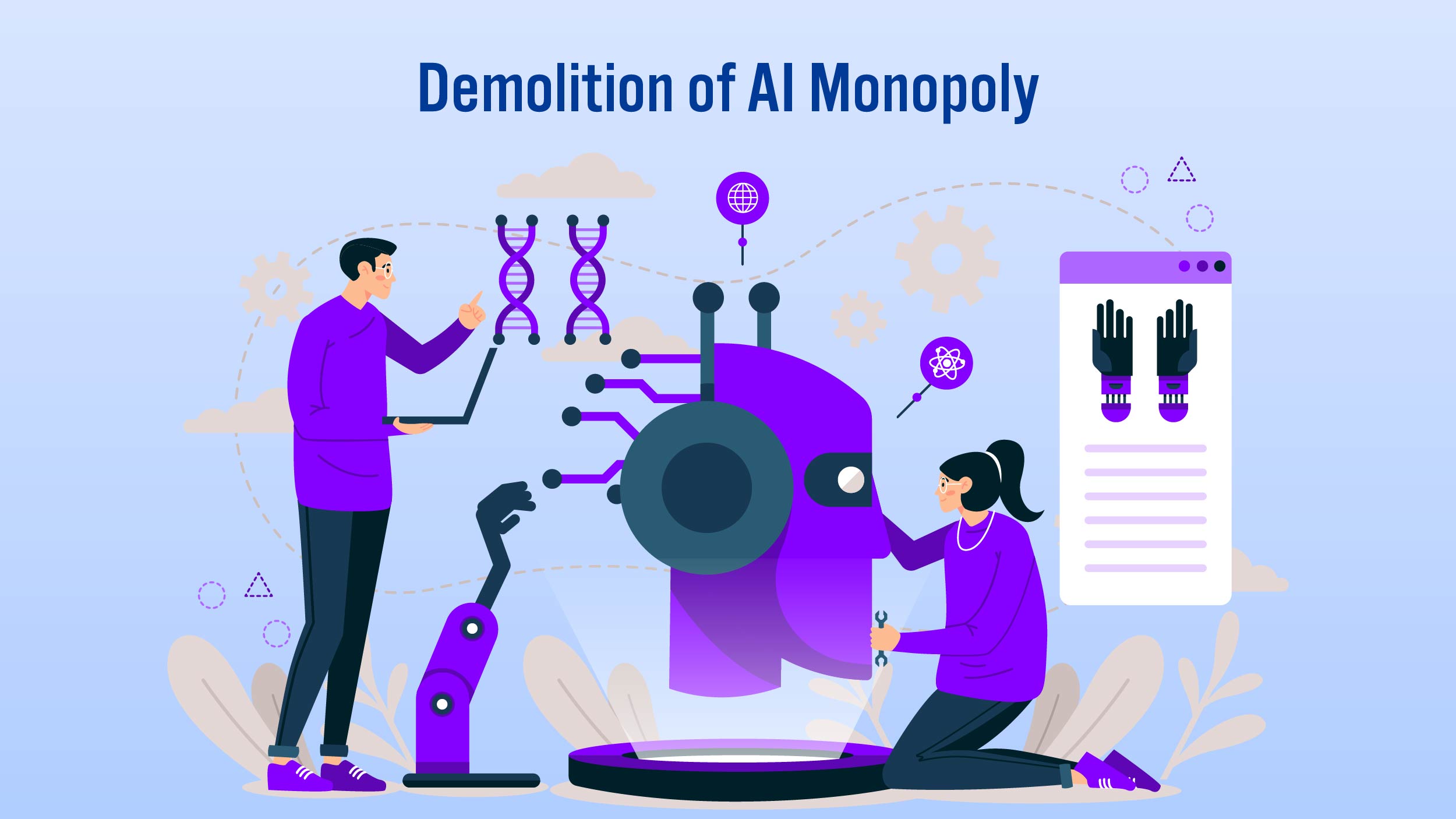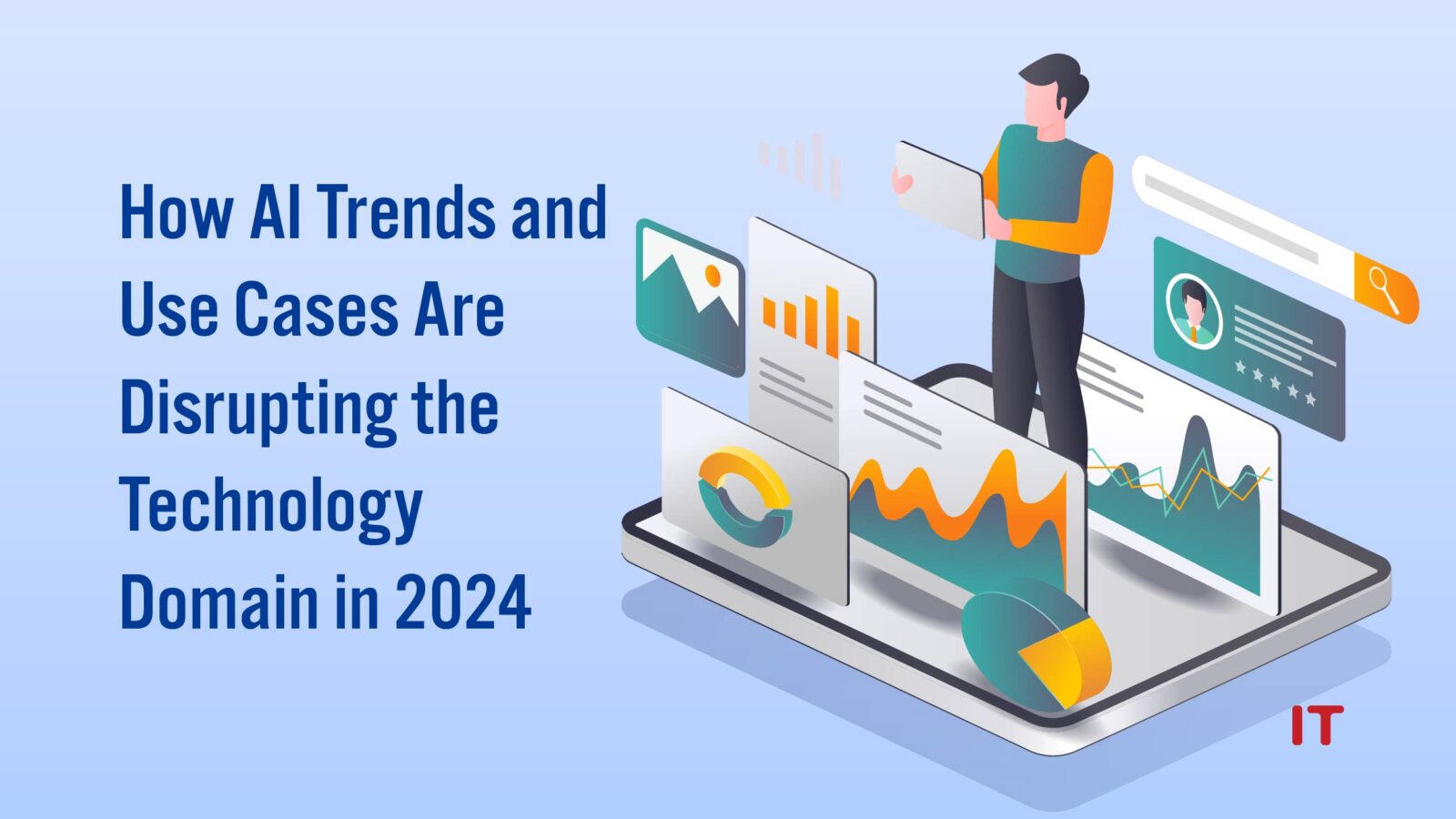Artificial Intelligence (AI) has evolved rapidly in recent years, transforming various industries and driving innovation across the globe. From enhancing customer experiences to improving operational efficiency, AI has become a powerful tool for businesses in a wide range of use cases. In this introduction, we will explore some of the key AI trends and use cases.
Disruptive AI Trends and Use Cases Taking 2024
 Analysts predict that once AI breaks out of the early adopter mold and becomes more widely used, it will play a larger role in society and transform several different industries. Businesses already rely on AI assets for increased productivity, quicker insights, and improved customer experiences. Let’s examine what the AI trends and use cases will look like in 2024 as it approaches maturity.
Analysts predict that once AI breaks out of the early adopter mold and becomes more widely used, it will play a larger role in society and transform several different industries. Businesses already rely on AI assets for increased productivity, quicker insights, and improved customer experiences. Let’s examine what the AI trends and use cases will look like in 2024 as it approaches maturity.
Augmented Analytics on the Rise
Utilizing machine learning (ML) and natural language processing (NLP), augmented analytics now allows AI technologies to aid with data preparation and insight production processes, enhancing the widely used data exploration techniques. Augmented analytics is one of the best AI trends and use cases out there. This technology affects how organizations view data, and is one of the undisputed AI trends for 2024. It also has applications in every industry.
According to Gartner, augmented analytics will be used to automatically produce 75% of data stories by the year 2025. Business users and executives will be able to get deep insights and automate identifying major changes without any prior experience working with data due to this expanding data culture.
Precision Predictive Analytics
Predictive analytics is one of the best AI trends and use cases. This approach yields numerous benefits, including optimized inventory management, expedited delivery times, reduced operational costs, and ultimately, increased sales and revenue.
However, the accuracy of predictive analytics sometimes falls short, particularly when data feeds fail to predict the outcome accurately.
This landscape is poised to change in the coming year, as more businesses explore the integration of predictive analytics with emerging artificial intelligence trends. By leveraging AI alongside predictive analytics, companies can enhance the accuracy and timeliness of their forecasts. Indeed, research indicates that incorporating AI technologies could potentially lead to a significant reduction in operating expenses, a prospect that has caught the attention of 44% of executives across various industrial sectors.
Also Read: What is Infrastructure as a Service and How Does it Work?
More importantly, combining AI with predictive analytics models might be essential for boosting accuracy levels because you’ll have the most recent information for every system and resource.
Demolition of AI Monopoly
 Until very recently, artificial intelligence was all but dominated by juggernauts like Google, IBM, Microsoft, and Amazon. Smaller companies and individuals were unable to participate in the development of this technology due to its high cost and complexity. Yet during the past few years, an open-source movement has swept through the entire IT sector, democratizing the field of artificial intelligence in particular.
Until very recently, artificial intelligence was all but dominated by juggernauts like Google, IBM, Microsoft, and Amazon. Smaller companies and individuals were unable to participate in the development of this technology due to its high cost and complexity. Yet during the past few years, an open-source movement has swept through the entire IT sector, democratizing the field of artificial intelligence in particular.
This has already begun to take place. Hugging Face emerged as one of the interesting AI trends and use cases. It unveiled the first community-built, multilingual large language model dubbed BLOOM. A flurry of additional open-source AI art producers, including Lensa, Stable Diffusion, and OpenAI’s DALL-E, have sparked an explosion of individual creativity.
According to a recent report OpenAI, which began as a non-profit research center, has quickly expanded into a $90 billion digital juggernaut, making it one of the most valuable startups in the United States. Jasper, an AI copywriter, just raised $125 million and reached a unicorn value, joining a wave of other open-source AI firms in attracting investors. The above-mentioned are two excellent examples of AI trends and use cases.
Wild West AI To Be Regulated
Since there is little to no government oversight or legislation that particularly governs the development and application of artificial intelligence, the sector has operated practically unabated for years. Yet things are starting to shift. After spending 2022 honing their claws, lawmakers and regulators are now prepared to pounce.
Governments all over the world are developing frameworks for increased AI regulation. A “bill of rights” for artificial intelligence was unveiled in the US by President Joe Biden and his administration. Among other things, it contains instructions on how to safeguard an individual’s personal information and restrict spying. Also, the Federal Trade Commission has been taking action against several corporations already while closely observing how they gather data and deploy AI algorithms.
AI Ethics Under Scrutiny
AI still faces significant legal and ethical concerns, despite its obvious value and enormous potential. The degree of severity varies; potential consequences can be adverse or deadly. Deep fakes, biased algorithms, and models that have deteriorated over time are all alarming reminders that legal frameworks must change to keep up with the rapidly developing AI market.
Businesses must handle AI safely and ethically even if regulatory and legal frameworks are now being developed, and an AI Bill of Rights will be released soon. Recently, the first class-action lawsuit in the US was brought against an AI system, but it won’t be the last. Although the legal sector may be technologically far ahead, businesses and governments need to take safety and responsible practices seriously as AI becomes more integrated into our daily lives. Also, we’ll see more transparency in situations like these and learn how to steer clear of such mistakes in the future.
An AI legislation (New York City Local Law 144) that mandates companies to adhere to bias audit standards before utilizing automated tools for screening job candidates has already been passed by the New York City Department of Consumer and Worker Protection. Also, recruiting teams must disclose to candidates how they use these resources for job postings and recruitment.
Final Takeaway
The rapid advancement of AI technology has led to significant AI trends and use cases across industries. Businesses are leveraging AI to drive innovation, improve efficiency, and automate processes. From customer service to cybersecurity, marketing to inventory management, and personalized learning in education, AI is being applied in a wide range of use cases. It enables precise targeting, data-driven decision-making, and enhanced customer experiences. By harnessing the power of AI trends and use cases, organizations are gaining a competitive edge and paving the way for future growth in their respective industries.

































